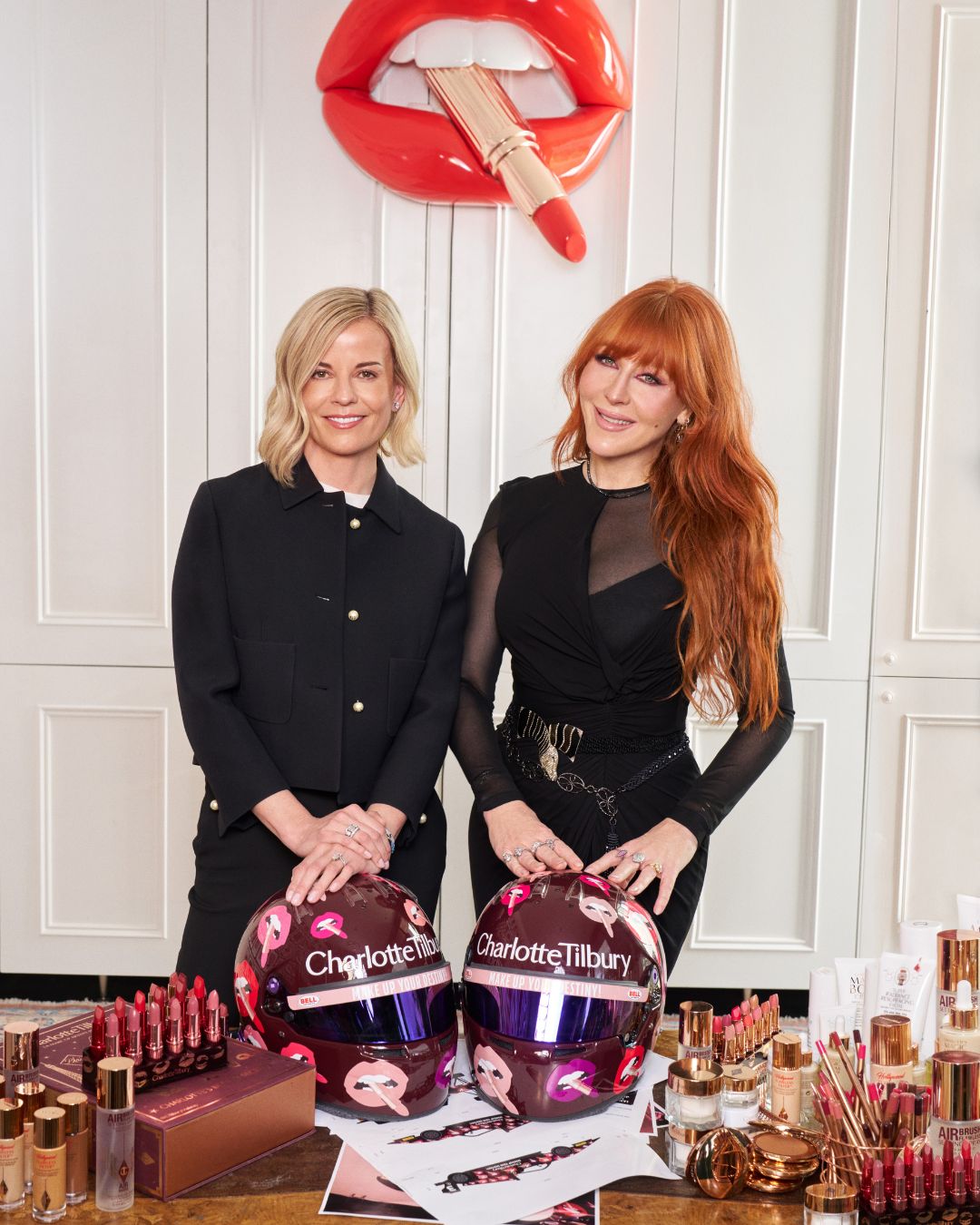
Formula 1 has been a part of my life from a young age. Ever since I was little, I’ve sat down and watched the races with my family every Sunday—not just because of the excitement of the sport, but to immerse ourselves in a world that couldn’t have been further from our own. The world of Formula 1 oozes luxury. Yachts, celebrity and champagne celebrations have long been a part of it all, and it would be wrong to suggest it doesn’t add to the appeal.
But as I got older and wiser, the glitz and glamour started to lose its magic. Instead of feeling the excitement I used to experience watching Michael Schumacher race around the streets of Monaco in that iconic red Ferrari, I couldn’t shake the feeling that something wasn’t quite right.
There was such an obvious lack of gender equality in Formula 1. Yes, there were women on the track, but they tended to be there for some sort of "decoration"—waving flags at the side of the grid in a bikini or positioned front and centre in the pit lanes, dressed in fabulous designer clothes. But as for seeing a woman in one of the race teams? Almost unheard of. Let alone driving in one of the cars. In fact, if I were to tell you more women have orbited the earth in a spaceship than have officially driven in a Formula 1 cockpit you probably wouldn’t believe me—but it’s the truth.
More recently, we've entered a new era of Formula 1, where women get more opportunities. Monisha Kaltenborn became the first woman to ever take charge of an F1 team in 2010, and Claire Williams stepped in for her father, Frank, at Williams Racing in 2013. Seeing these incredible women forge a path for themselves helped reignite my passion for the sport, and led me down the (albeit long and winding) path to becoming a Formula 1 correspondent and sports broadcaster, with a specialism in women’s sport.
Meet the fangirls shaping Formula 1
Fast forward to today, and Formula 1 is experiencing a truly monumental change. Forty per cent of fans are now female, and the sport is finally having to take women more seriously.
Personally, I think some credit can go to Box to Box Films and Netflix for the hit show Drive to Survive. The fly-on-the-wall documentary about the inner workings of the teams has created a new generation of girls and women interested in Formula 1. Races are recapped on all forms of social media, and countless TikTok trends around the sport have been born. With such a huge female fan base (and truly passionate F1 fan girls), the power of women can no longer be underestimated or ignored in the world of Formula 1.
@lissiemackintosh ♬ Vogue - Madonna
Breaking new boundaries
Last week, when I heard about a partnership between Charlotte Tilbury and F1 Academy, I got an excited feeling in my stomach. While you may have seen this news doing the rounds on social media, I want to explain just how monumental and important this partnership is. For background, the F1 Academy was set up in 2022 as a woman-only championship, helping to develop young drivers and get them to high levels of competition. But in 2023, a new managing director Susie Wolff was appointed at the academy. She's a female powerhouse with extensive experience both on and off track, a woman who's kicked down doors in a male-dominated industry, and also the first woman in over 22 years to take part in a race weekend (she drove in a practice session at the 2014 British Grand Prix).
Sure, an all-woman series isn’t a new concept. It has, in fact, been tried before in the form of W Series. However, W Series came to an abrupt end after experiencing financial issues due to a lack of sponsorship—something the F1 Academy is clearly not experiencing. With the new partnership with Charlotte Tilbury, I can allow myself to imagine a new audience of make-up enthusiasts falling in love with motorsport. It marks two companies, both run by women, who prioritise female confidence, encourage women to dare to dream, and will push to make the impossible possible—like, dare I say it, giving women the opportunity to drive a Formula 1 car.
“I faced so much scepticism when starting the F1 Academy, especially from male colleagues,” Susie told me when I sat down to discuss the situation with her. “Even my husband [Toto Wolff, Team Principal of Mercedes AMG Petronas F1 Team] said to me, ‘You’re never going to get signatures from the teams in F1 to agree to this. But after three months and countless all-nighters, we achieved it.'”
@fanbehaviorf1pod ♬ Frolic (Theme from "Curb Your Enthusiasm" TV Show) - Luciano Michelini
World firsts
Because of Susie and her teams’ dedication, all ten Formula 1 teams, such as Ferrari and Aston Martin, are supporting one driver in the championship this year—something that has never been done before. And it starts at the season opener in Jeddah next weekend, where we’ll see those teams lined up on the grid next to five others. These will include a new Tommy Hilfiger car as part of a new sponsorship that was announced on Monday, alongside the fabulously designed Charlotte Tilbury car. To me, this introduction of make-up and fashion brands into F1 is exciting, diverse, and adds a new type of luxury to the track—something we, as female fans, can immerse ourselves in.
“The purpose of the F1 academy was to do something ground-breaking and make an impactful change in the perceptions of women in motorsport”, says Susie. “We wanted to bring in a new audience than those previously involved and that’s why it was a 100% match to team up with Charlotte Tilbury, a female-led brand that also had a vision.”
This, I think, proved a defiant response to some of the criticism that’s been given by doubters online about the partnership. Similar to the backlash experienced after Women’s Super League team Arsenal announced a deal with make-up brand Il Makiage last year, some people didn’t understand the need to have stereotypically "girly" brands within sport. But why not? England Lioness Ella Toone once told me she hated not being able to wear her false eyelashes on pitch, sharing that they made her feel more confident and wearing them never stopped her from scoring goals for her country. Why is there a narrative that to be professional in an office you have to wear a certain amount of make-up, yet to be a sports fan you can’t wear any at all? Why can’t women enjoy taking part in sports while also loving make-up? I’m no expert in psychology, but it doesn’t take a rocket scientist to suggest that if you feel good about yourself, you’re going to perform better on pitch, on track or even in the office.

Changing the sport as we know it
Because I’m being completely candid here, just last week, I found myself crying over how difficult I find it working in a male-dominated industry after a hard day at work. But I gave my hair a brush, put some make-up on and walked into work feeling a lot better about myself. And it’s something Susie can relate to, as well. “It’s not about having to wear loads of make-up. When I’m travelling or working long hours in motorsport and as a mum, if I put a bit of Wonderglow on, I immediately feel revitalised. People don’t realise the impact a bit of make-up can have. I know I’ll be much better in a boardroom if I’m feeling my best,” she says.
So what’s the measure of success? “The barriers to entry for women in motorsport have been significant. Issues such as limited opportunities for young female drivers to progress through the ranks, lack of representation at higher levels of competition and ingrained stereotypes about gender roles in racing have all contributed to the absence of women in the sport,” reveals Charlotte Tilbury. But with times changing and positive steps in the right direction, I hold out hope. Interestingly, 80% of F1 fans believe a woman will be racing in F1 within the next ten years, and so it seems, does Charlotte Tilbury.







